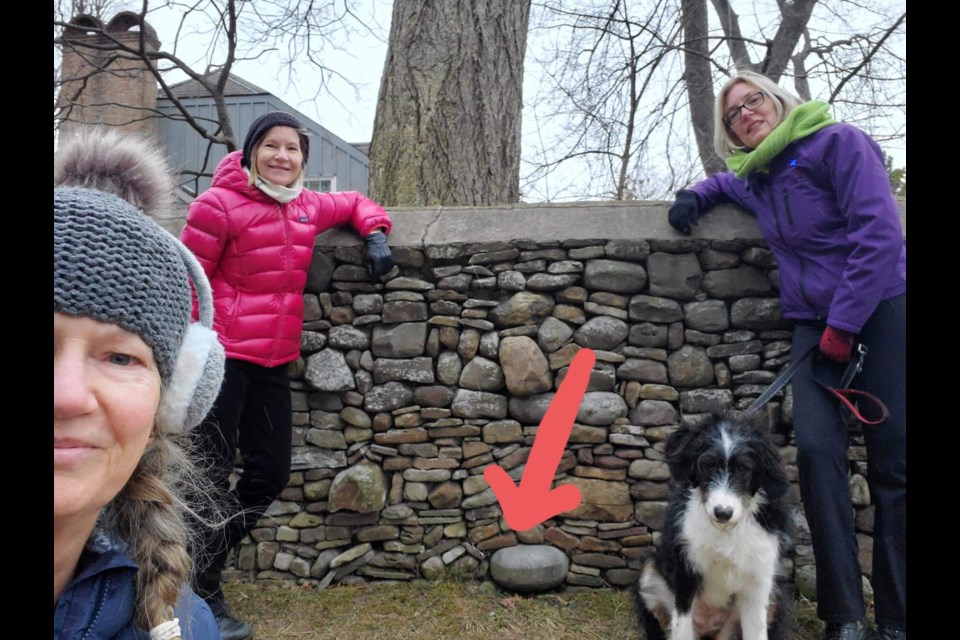The Niagara-on-the-Lake Museum, closed again by the current lockdown, is looking for ways to keep people engaged with local history.
With the current April break underway for students, staff have turned their attention to kids.
A heritage bingo contest earlier this year for adults has been revamped to attract the younger set, who can learn about the history of the area while having some fun outdoors, says Shawna Butts, assistant curator and education programmer.
There is a bingo card available online, with each square containing a heritage activity to be completed, such as creating a NOTL heritage rap song, or exploring Fort Mississauga.
Kids are asked to complete two lines or two diagonals, and send photos of themselves taking part in the activities.
While some parental involvement will be necessary, Butts says she hopes kids will “take ownership” of the game to get the most out of it.
Fran Boot was one of the museum members who had fun with the recent heritage bingo, which began in January and wrapped up in March.
She had been participating in some of the online museum programs, she says, but when this came along, “it was an activity that seemed like a fun way to learn a bit of the history of the town.”
She and two friends, Betty Houghton Knight and Carol McIntosh, first mapped out a plan of how they would approach the challenge.
The three of them love to walk, and do so together regularly.
They typically walk five kilometres together, from the parkette at the bottom of the hill up to Queenston Heights, and up and around Brock’s Monument, doing the loop three times. But to play heritage bingo, they used their walking time to complete the activities, plotting what they could do in a five-kilometre walk, through cold, snowy days. “It got us out during the longest, darkest stretch of winter. We couldn’t go away, so this was our way of keeping busy in town, physically distancing, getting some exercise and having fun,” she says.
“It was like a scavenger hunt with a bingo card,” and at each activity, they would take photos to show they were there, often with Luna, Knight’s “lovely 60-pound bernedoodle.”
Knight and McIntosh are “relatively new” in town, but Boot has lived here since 1979, and she still discovered some places she’d never been to, she says.
They also had some lively discussions. One was after their visit to Vrooman’s Battery, an important site during the Battle of Queenston Heights in the War of 1812. But the women also recognized the Vrooman name in association with the story of Chloe Cooley. “On the one hand the battery was a site of a heroic act, and maybe five kilometres north was the site that Chloe Cooley was shoved on a boat and taken across the river,” says Boot. “In one place we’re honouring the family, and in another, we’re thinking, what did they do?”
But Boot admitted they didn’t really know the connection, and were interested in learning more.
“What a great question,” says Butts, when it was posed to her.
“Yes, Vrooman’s battery does have an association to Adam Vrooman, the man who bound Chloe Cooley and sold her across the river. During the War of 1812, the land the battery was on was owned by Adam’s son, Solomon Vrooman. The battery, with a 24-pounder gun, was used by members of the British Militia to harass the American forces crossing the river during the Battle of Queenston Heights. As the son of Adam Vrooman, Solomon would have grown up in a family that accepted and practised enslavement, although we likely don’t know where Solomon personally stood on the matter,” says Butts.
“I can only imagine the discussion that Fran and the other bingo ladies had, especially now, in an era where many are pushing to change community names, landmarks, etc. that have ties to slavery. It’s so great to hear that this bingo card not only provided people with a fun way to explore NOTL’s heritage, but that it sparked some great historical discussions.”
“We are keeners,” says Boot. “We like activities. It might not be typical for 60-year-old women, but we thought it was interesting.”
She says she would encourage kids to first plot out the activities, so they feel in control of the game, and maybe, if permitted, might have fun if they could join forces with another family.
But to get the most out of it, “the kids should be the ones to decide how to approach it,” she advises.
If the activities hadn’t overlapped, Boot says she and her friends might have done this one as well, just for fun — especially the rap song — and would certainly consider doing it again if it’s offered.
The museum may do another bingo later in the spring for adults, but for now, Butts is concentrating on making it fun for kids. It began April 1, and without registration, it’s difficult to know how many families have decided to try it, she says.
And although the school break might prove a good time to give it a try, they have until the end of the month to complete their lines.
Once they’ve accomplished that, with selfies to show it, [email protected] for a prize, she says.
For more information, go to the NOTL Museum’s Facebook page.



